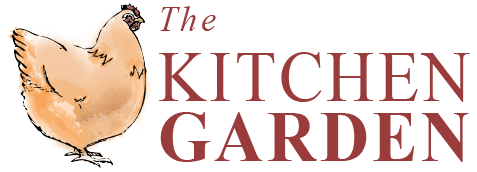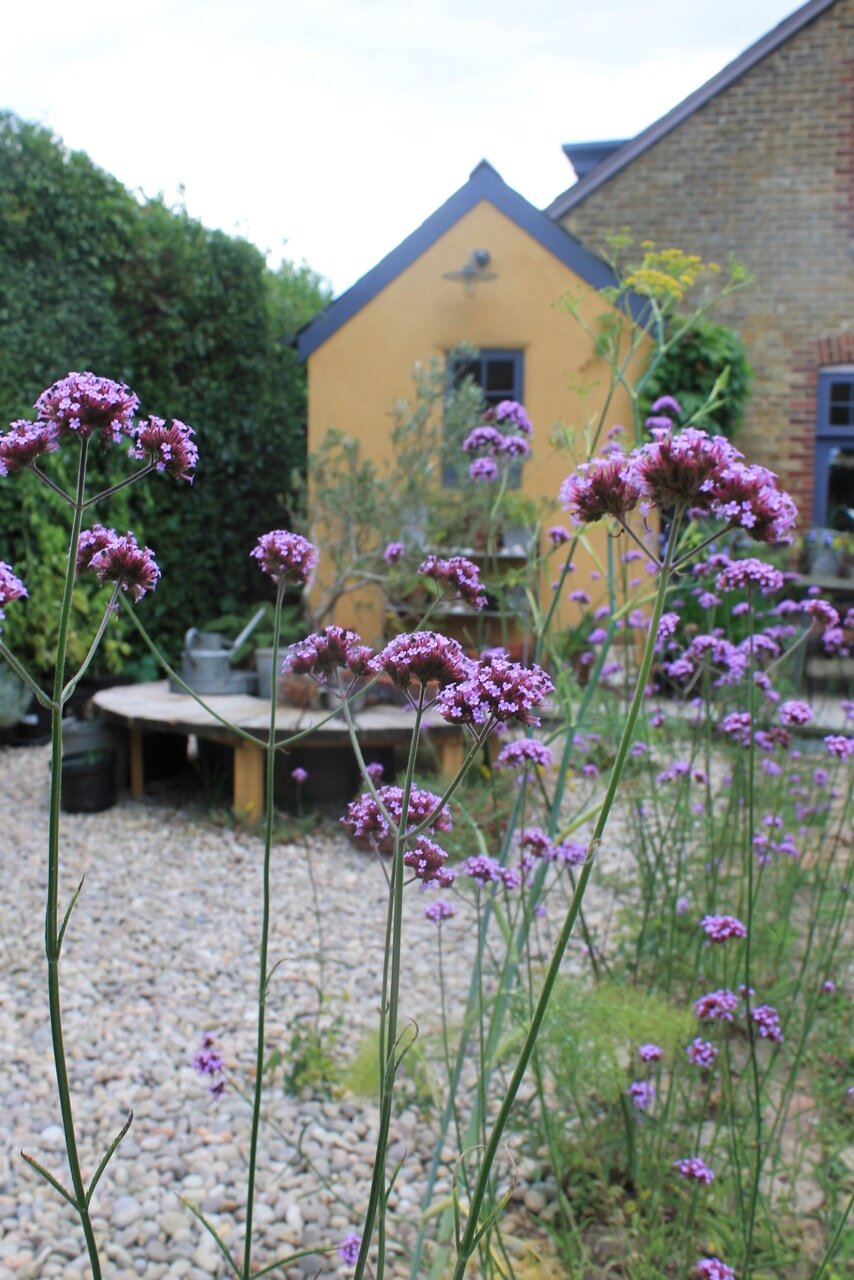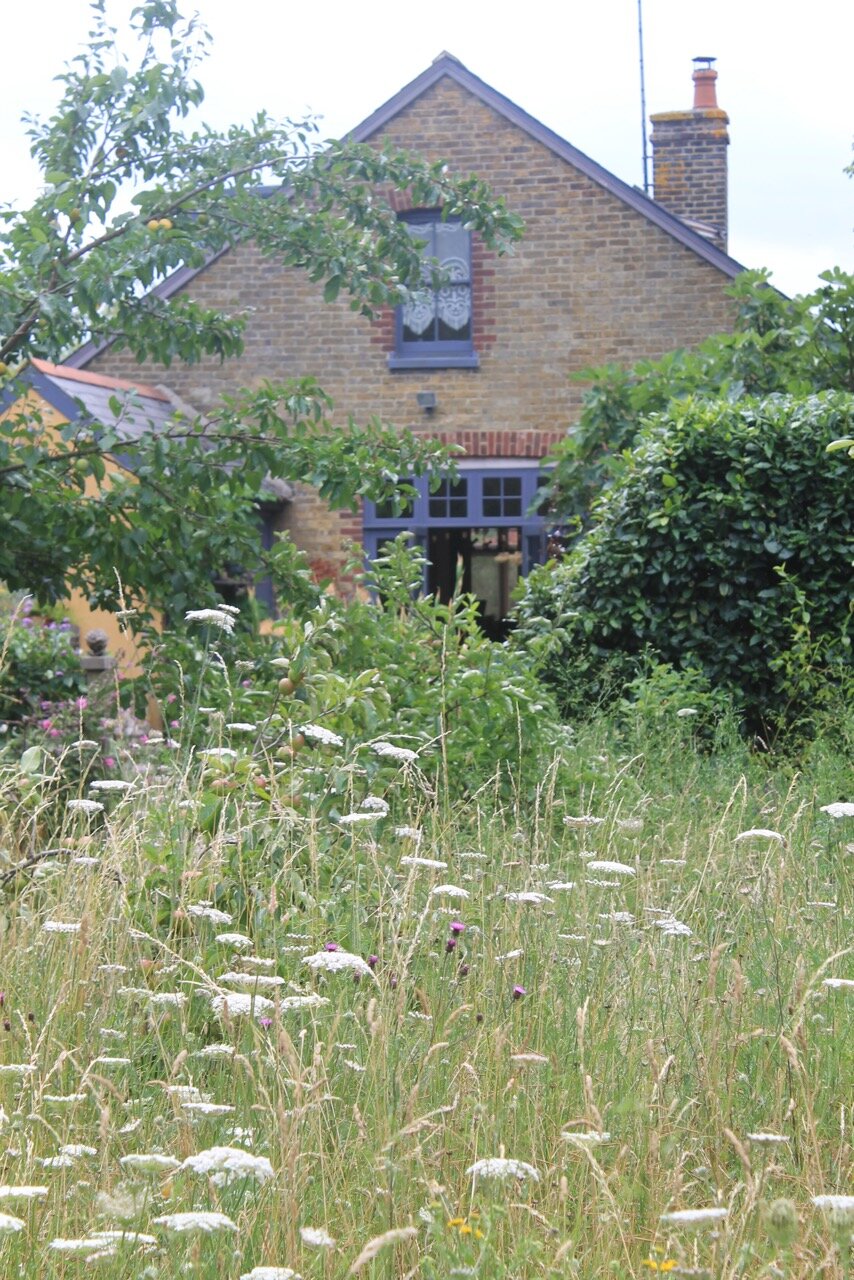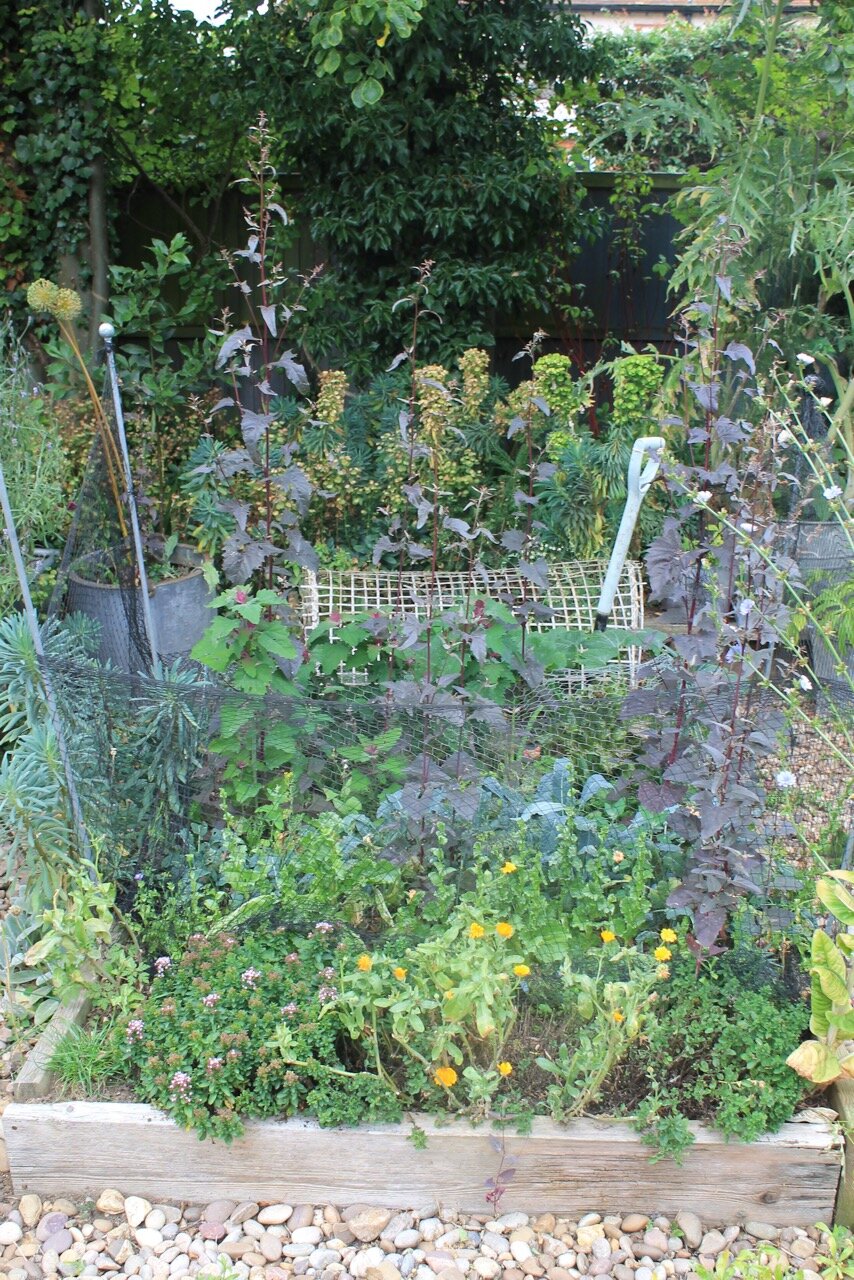Here in Whitstable, gardens don’t last much after midsummer. Unless you’re prepared to water, the rock hard clay soil isn’t hospitable, and this dry spell has encouraged plants to bloom quickly and set seed. So it looks like August here, and the only colour I see has come from those few survivors that really feel at home and have seeded themselves all over their special habitats.
First of all, for seeds to get as far as germinating, they have to survive my special troop of scarifiers – my hens – who beady eyed, scoff anything edible, and seeds are a special treat. Maybe it’s because they’re so tiny that the verbenas have safely made it home in the path (not of course in the beds where I’d like them to flower) and liven up the terrace. They’re joined by rogue agapanthus, that launch themselves out of something else’s flower pot; by whispy fennels, both bronze and normal; and by hundreds of marigolds.
The gravel drive is a symphony of larkspur, verbena and asphodel, but everything really prefers gravel it seems. The veg beds are so crammed with deep red orach, glitzy magentaspreen and bright-blue chicory that there’s hardly any room at all for vegetables. Obviously I could weed them out, but I judiciously leave a few, and then more just pop up. Of course, I could always eat them too.
The one place where I really rely on self-seeders is the meadow. Ten years ago this was a lawn that was left to grow, and apart from spring bulbs, yellow rattle and the campions I’m desperate to integrate, all its other inhabitants have somehow appeared: the ox-eyed daisies, the stone parsley, the grassy vetchling, knapweed, and at the moment, a sea of wild carrot. For all of which I am truly grateful, thank you.



